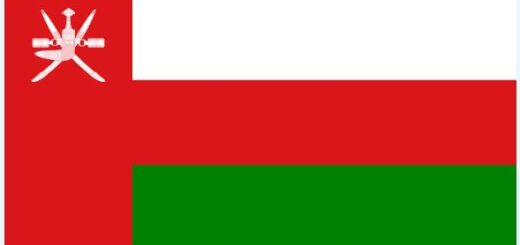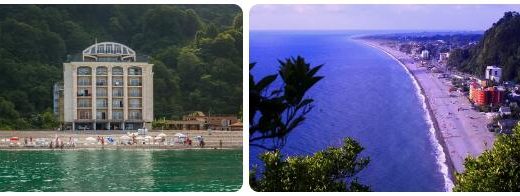State Structure and Political System of Georgia
Georgia is a presidential republic. The current Constitution was adopted on August 24, 1995. The head of state and head of the executive branch is the president, who is elected for a term of 5 years by universal, direct, secret suffrage. The President of Georgia, E. Shevardnadze, was elected on November 5, 1995. On November 23, 2003, a “flower revolution” took place in Georgia, as a result of which the opposition came to power. President E. Shevardnadze was removed for rigging the results of the parliamentary elections and weak management of the Georgian economy. A self-proclaimed triumvirate became the head of state (N. Burjanadze – acting president, V. Zhvania – state minister and M. Saakashvili – a former member of the government). New presidential elections in Georgia were scheduled for January 4, 2004. Adzharia opposed this date.
South Ossetia was also not going to participate in the elections. Abkhazia has long distanced itself from Georgia and believes that elections are the business of the Georgian people. In such a situation, the elections could not take place. The United States spoke about the need to elect a new president. Elections of a new president nevertheless took place on April 4, 2004. M. Saakashvili was elected by him, who on January 25, 2004 took an oath of allegiance to the Constitution of Georgia. The population of Abkhazia and South Ossetia did not take part in the elections.
The President is also the Supreme Commander and presides over meetings of the National Security Council. Administratively, Georgia is divided into 68 districts, united into 11 territories. The state-territorial structure of Georgia must be approved after the jurisdiction of Tbilisi over the entire territory of Georgia is determined. Large cities: Tbilisi, Kutaisi, Batumi, etc.
The highest legislative body is the bicameral parliament, in which 12 of the country’s nearly 70 political organizations and movements are represented. Most seats in parliament are held by the ruling party, the Union of Citizens of Georgia, which was previously
led by Shevardnadze. Currently, only the lower house is active. The most influential opposition force in the parliament is the Union for the Revival of Georgia, led by the leader of Adzharia, A. Abashidze. Changes may occur after new parliamentary elections scheduled for 28 March 2004.
Georgia’s internal political situation remains difficult. Contradictions persist over the status of Abkhazia and South Ossetia. The reform of the political and territorial structure, apparently, should take a central place in the formation of Georgian statehood. A very unstable socio-political situation in the once one of the most prosperous republics in the USSR may be due to the uncertainty of intra-regional politics.
In order to protect the territorial integrity, the government of Georgia did not recognize the sovereignty of the autonomous republics. As a result, already in 1992, a long process of the actual disintegration of the country began.
Today Georgia is rather a disunited than a single state. However, future political and economic changes will certainly put the need for interregional cooperation on the agenda. This kind of cooperation, based on the principles of integration and subsidiarity, should contribute to the development of inter-regional and inter-ethnic consolidation in Georgia on the basis of an optimal combination of national and regional interests. Based on this, in the near future Georgia will obviously have to delegate the maximum possible rights to its intrastate formations and thereby abandon a tough centralist policy. It is the transfer of broad powers and resources to the regional level that is an adequate answer to many seemingly unsolvable issues.
The latest institutional transformations in the authorities of the Autonomous Republic of Adjara testify to the fact that the leadership of the republic makes extensive use of the experience of political autonomies.
Apparently, for every political autonomy, including the Adzharian one, the right to issue local laws on issues within the competence of the autonomy and the existence of its own parliament is of fundamental importance. There is an urgent need for constitutional regulation of the political-territorial organization of Georgia.
The very specificity of the transformation of the Supreme Council of Adjara into a bicameral parliament, in principle, also corresponds to world practice. The framework of regional self-government should be determined not only by the national Constitution and laws, but also by the constitutions of autonomous entities and international acts. However, the independence of a particular region should not violate the national Constitution and conflict with national
policy.
In order to achieve peace and accord, the Center and the autonomies must equally strive for integration and compromise. It is the intrastate unity and the consolidation of economic interests that will enhance Georgia’s prestige in the international arena.
Georgia’s foreign policy priorities are formulated in the Concept of Strengthening the Stability of Public Life, State Sovereignty and Security, and Restoring Georgia’s Territorial Integrity, adopted in 1997 by the country’s parliament. It is based on the thesis of Georgia’s European orientation. In this regard, the tasks of integration into European structures and, above all, into the Council of Europe and the European Union are put forward. Cooperation with NATO member countries is actively developing. Agreements have been concluded, including on military cooperation, with the USA, Great Britain, Germany, Turkey and other states.
According to the decision of the Parliament of Georgia, it is going to submit an official application for joining NATO. The total number of the Armed Forces of Georgia is 26,900 people. regular troops and 250 reserves. Of these, the Ground Forces 23,800 people. (2 commands, 4 brigades, 3 battalions). Armament of the Ground Forces – 79 tanks (48 – T-55, 31 – T-72), infantry fighting vehicles – 185; BTR -21, artillery – about 100, 16 BM-21 installations. Air Force – 3 combat aircraft, 3 armed helicopters. Naval forces – 10 patrol and combat boats.
Diplomatic relations with the Russian Federation were established on July 1, 1992.



